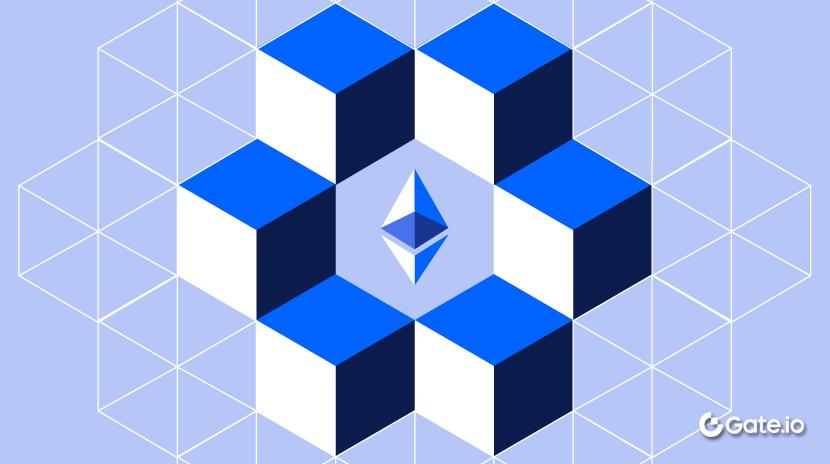トランザクションのライフサイクルを通じて、イーサリアム、ソラナ、およびアプトスの違いを理解するためのガイド
取引ライフサイクルの観点から、この記事では、AptosとEthereumやSolanaなどの主要なパブリックブロックチェーンとの詳細な比較を提供し、主要な技術的違いを強調しています。また、Aptosがリアルワールドアセット(RWA)トークン化や決済重視のファイナンス(PayFi)における相当なポテンシャルを探究し、セキュリティ駆動の価値ネットワークを中心に構築された物語を通じて、Aptosが伝統的なファイナンスとブロックチェーンエコシステムを結びつける方法を説明しています。Move言語、Aptos、および他のパブリックブロックチェーンとの技術的な違いを比較することは、観察の深さが異なるため、退屈に見えるかもしれません。表面的な分析は必然的に曖昧であり、コードに深く入りすぎると、大局を見失う可能性があります。Aptosと他のパブリックブロックチェーンとの違いを迅速かつ正確に理解するためには、適切なアンカーポイントを選択することが不可欠です。
著者は、トランザクションのライフサイクルが理想的なエントリーポイントであると考えています。トランザクションが経過する各ステップ―作成と開始、放送、順序付け、実行、最後に状態更新まで―を検討することで、ブロックチェーンの設計思想と技術的なトレードオフを明確に理解することができます。この視点をベースラインとして使用することで、後退することで異なるブロックチェーンの核となる物語を理解することができ、前進することでAptos上に構築される魅力的な市場アプリケーションの探求が可能となります。
以下に示すように、ブロックチェーン取引は主にこれらの5つのステップを中心に展開されます。この記事では主にAptosに焦点を当て、その独自の設計を解説し、EthereumとSolanaで見られる主な違いと対比します。

Aptos: ハイパフォーマンスブロックチェーンのための楽観的並列処理
Aptosは高いパフォーマンスを強調するパブリックブロックチェーンです。そのトランザクションライフサイクルはEthereumと類似していますが、ユニークな楽観的並列実行とメンプールの最適化により実質的な改善を実現しています。Aptos上でのトランザクションライフサイクルの主要なステップは次のとおりです:
創造と開始
Aptosネットワークは、軽量ノード、フルノード、およびバリデータで構成されています。ユーザーは、軽量ノード(ウォレットやアプリケーションなど)を介してトランザクションを開始します。軽量ノードはこれらのトランザクションを近くのフルノードに転送し、フルノードはそれをバリデータと同期します。
放送
Aptosはmempoolを維持していますが、QuorumStoreの後、mempoolはもはやノード間で共有されません。Ethereumとは異なり、Aptosのmempoolは単なるトランザクションバッファーではありません。mempoolに入った後、トランザクションはルール(例:FIFOまたはガス手数料)に従って事前にソートされ、後で衝突のない並列実行が保証されます。この設計により、Solanaの高いハードウェア要件を回避できます。
注文
AptosはAptosBFTコンセンサスを採用しています。原則として、提案者は取引を自由に並べ替えることはできませんが、aip-68により、提案者には遅延取引を含めるための限られた追加権利が与えられます。競合回避は既にメンプールの事前並べ替えで処理されているため、ブロックの作成は提案者主導ではなく、むしろ検証者の協力に依存しています。
実行
Aptosは、楽観的並列実行を実現するためにBlock-STMテクノロジーを活用しています。トランザクションは衝突がないと仮定され、並行して処理されます。実行後に衝突が発生した場合、影響を受けるトランザクションは再実行されます。このアプローチにより、マルチコアプロセッサを活用してパフォーマンスを大幅に向上させ、最大160,000のTPSに到達します。
ステートの更新
バリデータは、イーサリアムのエポックメカニズムに似ていますが、より効率的に、チェックポイントを使用して状態更新を同期化し、最終的な確定を行います。
Aptosの主要な利点は、楽観的並列実行とメンプールの事前順序付けを組み合わせることで、ノードのハードウェア要件を削減し、スループットを大幅に向上させる点にあります。以下に示すように、Aptosのネットワークアーキテクチャは、この設計を明確にサポートしています。

ソース:Aptos Whitepaper
イーサリアム: シリアル実行のベースライン
スマートコントラクトの先駆者であるEthereumは、パブリックブロックチェーン技術の起源です。その取引ライフサイクルは、Aptosを理解するための基本的なフレームワークを提供します。
イーサリアム トランザクション ライフサイクル
- 作成と開始:ユーザーは、リレーゲートウェイやRPCインターフェースを介してウォレットを通じて取引を開始します。
ブロードキャスト:取引は公共のメンプールに入り、パッケージ化されるのを待ちます。
オーダリング:PoSへのアップグレード後、ブロックビルダーは利益最大化の原則に基づいてトランザクションをパッケージ化します。リレーレイヤーを介して入札した後、彼らは提案者にバンドルを提出します。
実行: EVMはトランザクションを連続的に処理し、状態を単一スレッド方式で更新します。
ステートアップデート:ブロックは最終確定を得るために2つのチェックポイントで確認が必要です。
イーサリアムのシリアル実行モデルとメモリプール設計は、スロットごとに12秒のブロック時間と比較的低いTPSの性能制限を課しています。一方、アプトスは並列実行と最適化されたメモリプール設計により、性能において質的な飛躍を実現しています。

ソラナ:確定的並列処理を通じた極限の最適化
ソラナは高いパフォーマンスで知られており、そのトランザクションライフサイクルは、特にメンプールと実行方法の観点で、アプトスとは大きく異なります。
ソラナトランザクションライフサイクル
作成と開始:ユーザーはウォレットを介して取引を開始します。
ブロードキャスト:パブリックメンプールはありません。トランザクションは直接現在および次の2つのプロポーザに送信されます。
オーダリング:提案者は、ブロックのパッケージングを PoH(Proof of History)に基づいて行い、ブロックの時間はわずか 400 ミリ秒です。
実行:SeaLevelバーチャルマシンは、決定論的並列実行を使用し、競合を回避するために読み取りおよび書き込みセットの事前宣言が必要です。
状態更新:BFTコンセンサスはブロックを迅速に確認します。
Solanaは、パフォーマンスのボトルネックになる可能性があるため、メモリプールの使用を避けています。メモリプールを使用せず、独自のPoHコンセンサスを活用することで、ノードはトランザクションの順序について迅速に合意に達することができ、メモリプールでのキューイングの必要性を排除します。トランザクションはほぼ即座に確認されます。ただし、これはネットワークが混雑している場合、トランザクションがキューイングされるのではなく、削除される可能性があることを意味します。そのため、ユーザーはそれらを再送信する必要があります。
一方、Aptosの楽観的な並行性は、読み書きセットの宣言を必要とせず、ノードの参加を容易にし、さらに高いTPSを実現できます。

出典:ショールリサーチ
並行実行の2つのパス:アプトス vs ソラナ
トランザクションの実行は、ブロックチェーンの状態の更新を表し、トランザクションの指示が最終状態に変換されるプロセスです。これをどのように理解すべきですか?ノードはトランザクションが成功すると仮定し、ネットワーク状態への影響を計算します。この計算プロセスこそが実行と呼ばれるものです。
したがって、ブロックチェーンにおける並列実行とは、マルチコアプロセッサを使用してネットワーク状態の更新を同時に計算することを指します。現在の市場では、決定論的並列実行と楽観的並列実行の2種類の並列実行があります。これら2つのアプローチの根本的な違いは、並列トランザクションが競合しないようにする方法にあります。言い換えれば、トランザクション間に依存関係があるかどうかです。
これにより、ブロックチェーンがトランザクションの依存関係の競合を決定するタイミングが、決定論的および楽観的並列実行を2つの別々の開発パスに分割する要因であることがわかります。 AptosとSolanaは、それぞれ異なるパスを選択しました。
- Deterministic Parallel Execution (ソラナ): トランザクションは放送される前に、読み取り/書き込みセットを宣言する必要があります。Sealevelエンジンは、この宣言を使用して、競合しないトランザクションを並列に処理し、競合するトランザクションを直列に実行します。
利点:高い効率性。
欠点:高いハードウェア要件。
- オプティミスティック並列実行(アプトス):トランザクションが競合しないと仮定し、Block-STMを使用して並列で実行します。実行後、競合が見つかると、競合するトランザクションが再実行されます。メンプール内での事前ソートは、競合のリスクを減らし、ノードの負担を軽減します。
利点:軽量なノード要件と柔軟なスケーラビリティ。
欠点:紛争の場合の再実行オーバーヘッド。
例: アカウントAの残高は100です。取引1ではBに70を転送し、取引2ではCに50を転送します。Solanaは事前に読み書きセットを宣言し、衝突を事前に検出し、それから順次処理します。一方、Aptosは両方を並行して実行し、その後残高が不十分であれば調整して必要に応じて再実行します。この柔軟性により、Aptosはよりスケーラブルになります。
オプティミスティック並列処理は、メンプールを介して衝突を事前に確認します
楽観的並行性の中心的な考えは、同時に処理されるトランザクションが競合しないと仮定することです。したがって、トランザクションの実行前に、アプリケーションはトランザクション宣言を提出する必要はありません。実行後の検証中に競合が検出された場合、Block-STMは影響を受けるトランザクションを再実行して整合性を確保します。
ただし、実際には、取引の依存関係が事前にチェックされていない場合、多くの実行エラーが発生し、パブリックブロックチェーンが遅延する可能性があります。したがって、楽観的並列処理は単に取引が競合しないと仮定するだけでなく、リスクをより早い段階で軽減します、特に取引のブロードキャスト段階で。
Aptosでは、一度取引が公共のメンプールに入ると、特定のルール(FIFOやガス手数料など)に従って事前にソートされます。これにより、ブロック内の取引が並列で実行される際に競合しないようになっています。これにより、Aptosの提案者は取引を再配置する能力を持っておらず、ネットワークも専用のブロックビルダーを持っていません。メンプール内のこの事前ソーティングメカニズムが、Aptosの楽観的並列処理の実装の鍵となっています。明示的な取引宣言が必要なSolanaとは異なり、Aptosはそのようなメカニズムに依存せず、ネットワークノードへの性能要求を大幅に軽減しています。競合しない取引を保証するためのネットワークオーバーヘッドに関しては、Aptosのメンプールベースのアプローチの方がSolanaの宣言ベースのアプローチよりもTPSにはるかに小さな影響を与えます。その結果、AptosはSolanaの倍以上となる最大160,000のTPSに達することができます。事前ソーティングの副作用として、AptosでMEV(マイナーによる抽出価値)を得ることがより困難になります。これには利点と欠点がありますが、詳細な議論は本記事の範囲外です。
セキュリティ中心のナラティブは、Aptosの開発方向です
RWA: Aptosは、現実世界の資産トークン化と機関投資家向け金融ソリューションを積極的に推進しています。イーサリアムと比較して、AptosのBlock-STMは複数の資産転送トランザクションを並行して処理できるため、ネットワークの混雑による確認の遅延を回避できます。SolanaとSuiは高速なトランザクション速度を提供しますが、mempoolの設計がないため、ネットワークの過負荷時にトランザクションがドロップされ、RWAの確認の安定性に影響を与える可能性があります。Aptosのmempoolの事前ソートにより、トランザクションが順番に実行され、ピーク時でも資産記録の信頼性が維持されます。RWAアプリケーションには、資産の分割、利回りの分配、コンプライアンスチェックなど、複雑なスマートコントラクトのサポートが必要です。Move言語のモジュール式で安全な設計により、開発者は信頼性の高いRWAアプリケーションをより簡単に構築できます。対照的に、イーサリアムのSolidityは、その複雑さと脆弱性のリスクのために開発コストが高くなり、SolanaのRustプログラミングは効率的ですが、開発者の学習曲線が急になります。Aptosの開発者フレンドリーなエコシステムは、より多くのRWAプロジェクトを引き付け、ポジティブな成長サイクルを形成する可能性があります。RWA分野におけるAptosの強みは、セキュリティとパフォーマンスの組み合わせにあります。将来的には、従来の金融機関と協力して債券や株式などの価値の高い資産をオンチェーンに持ち込むことに集中し、Moveを使用して高度に準拠したトークン化標準を作成できます。この「セキュリティ+効率性」の物語は、AptosがRWA市場で際立つのに役立っています。
- 2024年7月、Aptosは正式にOndo FinanceのUSDYを生態系に統合することを発表し、主要なDEXや貸出プロトコルからのサポートも含まれています。2024年3月10日現在、Aptos上でのUSDYの時価総額は約1500万ドルに達し、USDYの総価値の約2.5%を占めています。2024年10月、AptosはFranklin TempletonがAptos Network上にオンチェーンの米国政府マネーファンド(FOBXX)を立ち上げたことを発表し、BENJIトークンで表現されています。さらに、AptosはLibreと連携してセキュリティトークン化を推進し、Brevan Howard、BlackRock、およびHamilton Laneからの投資ファンドをオンチェーンにもたらし、機関投資家のアクセスを強化しています。
ステーブルコインの支払い:ステーブルコインの支払いには、取引のファイナリティと資産の安全性の保証が必要です。AptosのMove言語は、リソースモデルを使用して二重支払いを防ぎ、すべてのステーブルコインの送金の正確性を確保します。例えば、ユーザーがAptosでUSDCで支払う場合、トランザクション状態の更新は厳重に保護され、コントラクトの脆弱性による資金損失を防ぎます。さらに、Aptosのガス料金の低さ(TPSの流通コストが高いため)により、少額の支払いシナリオで非常に競争力があります。イーサリアムのガス代が高いため、支払いの使い勝手が制限され、Solanaは低コストですが、ネットワークの混雑時にトランザクションをドロップし、ユーザーエクスペリエンスに影響を与える可能性があります。Aptosのmempoolの事前ソートとBlock-STM実行により、支払いトランザクションの安定性と低遅延が保証されます。
PayFiとステーブルコインの支払いは、分散化と規制順守をバランスよく保つ必要があります:AptosBFTの分散型コンセンサスは中央集権化のリスクを軽減しますが、モジュラーなアーキテクチャにより、開発者はKYC/AMLのチェックを埋め込むことが可能です。たとえば、ステーブルコイン発行者は、Aptos上で準拠したスマートコントラクトを展開して、取引が地元の規制に準拠するようにしますが、ネットワークの効率を損なうことなく。これは、Ethereumの中央集権化された中継モデルに優れており、Solanaの提案者主導の構造を補完し、潜在的な規制遵守リスクを回避します。Aptosのバランスの取れた設計は、機関投資家の採用に適しています。
PayFiおよびステーブルコイン決済におけるAptosの潜在能力は、その「安全、効率的、かつコンプライアンス」の三位一体にあります。将来的には、ステーブルコインの大規模な普及を目指し、国際送金ネットワークの構築、または大手支払い企業と協力してオンチェーン決済システムの開発を進めることを目指しています。高いTPSと低い手数料は、コンテンツクリエイターへのリアルタイムチップなどのマイクロペイメントシナリオをサポートしています。Aptosのストーリーは「次世代の支払いインフラ」として焦点を当て、企業とユーザーの両方の関心を引きつけることができます。
セキュリティにおけるAptosの利点—mempoolの事前ソート、Block-STM、AptosBFT、およびMove言語—は、攻撃への抵抗力を高めるだけでなく、RWAとPayFiの物語に堅固な基盤を築いています。RWA領域では、高いセキュリティとスループットが資産トークン化や大規模取引をサポートしています。PayFiとステーブルコインの支払いでは、低コストと高効率が現実世界でのアプリケーション採用を推進しています。Ethereumの堅牢さと低効率、Solanaの高速性と高い参入障壁に比べ、Aptosはバランスを通じて新たな道を開いています。将来、Aptosはこれらの利点を活用して、“セキュリティ重視の価値ネットワーク”の物語を形作り、伝統的経済とブロックチェーンの世界との橋渡しとなることができます。
要約:Aptosの技術的な違いと将来の物語
取引ライフサイクルを調査することで、Aptos、Ethereum、Solana、Suiの技術設計の違いを明確に比較し、それぞれのコアナラティブを明らかにすることができます。次の表は、放送、順序付け、実行段階における4つの類似点と相違点をまとめ、Aptosの独自の利点を強調しています。

Aptosの設計は、パフォーマンスとセキュリティの微妙なバランスを実現しています。そのmempoolの事前ソートは、Block-STMの楽観的並列処理と組み合わされ、ノード要件を削減しながら160,000TPSを実現し、Solanaの決定論的並列処理とSuiのオブジェクトレベルの並列処理を凌駕しています。イーサリアムの逐次実行と比較すると、Aptosの並列機能は質的な飛躍を表しています。mempoolを削除したSolanaとSuiの根本的な最適化とは異なり、Aptosは事前ソートメカニズムを保持し、高負荷下でのネットワークの安定性を確保します。この「安定性優先のスピード」アプローチは、Move言語のリソースモデルと組み合わされ、DDoS攻撃への抵抗やコントラクトの脆弱性の防止など、イーサリアムの従来のアーキテクチャやSolanaの高いハードウェア依存度を凌駕する、より強力なセキュリティをAptosにもたらします。同じくMove言語で構築されているSuiと比較すると、AptosとSuiの相違は特に洞察に富んでいます。Sui はオブジェクト中心であり、DAG ベースの順序付けとオブジェクト レベルの並列処理を使用して極端なパフォーマンスを追求するため、同時実行性の高い資産管理シナリオに適しています。Aptosはアカウント中心で、mempoolと楽観的並列性を活用して、汎用的な使用とエコシステムの互換性のバランスを取ります。この違いは、技術的な設計上の選択を反映しているだけでなく、Suiは複雑な資産運用に優れているのに対し、Aptosはセキュリティ主導のユースケースで優位に立っているという、アプリケーションの方向性の違いを示唆しています。まさにこのセキュリティとパフォーマンスの融合こそが、AptosにRWAとPayFiの物語における大きな可能性を与えているのです。RWAでは、Aptosの高スループットが大規模な資産のトークン化をサポートします。Ondo Finance(USDY時価総額~1,500万ドル)、Franklin Templeton、Libreとの最近のコラボレーションは、すでに成果を上げています。PayFiやステーブルコイン決済において、Aptosの低コスト、高効率、コンプライアンス機能は、マイクロペイメントやクロスボーダー決済をサポートしており、次世代の決済インフラの有力な候補となっています。
要約すると、Aptosはセキュリティと効率を取引ライフサイクルの各段階に統合し、それ自体をEthereumの堅牢性と低効率、Solanaの高性能と高い参入障壁、Suiのオブジェクト駆動の極限最適化とは異なるものに位置付けています。将来を見据えると、Aptosは「セキュリティ駆動の価値ネットワーク」という物語を活用し、伝統的な金融とブロックチェーンエコシステムを結びつけ、RWAおよびPayFi部門での取り組みをさらに深化させ、信頼性と拡張性を兼ね備えた新しいパブリックチェーンパラダイムを構築しています。
Movemakerについて:Movemakerは、Aptos Foundationによって認可された最初の公式コミュニティ組織であり、AnkaaとBlockBoosterによって共同で立ち上げられました。中国語圏のAptosエコシステムの開発と成長を促進することを目的としています。
中国語圏のAptosの公式代表として、Movemakerは、開発者、ユーザー、資本、および多くのエコシステムパートナーをつなぎ、多様でオープン、繁栄するAptosエコシステムの構築に取り組んでいます。
免責事項:この記事/ブログは参考情報であり、著者個人の見解を表しています。Movemakerの立場を反映しているわけではありません。この記事は次のことを意図していません:
(i)投資助言または投資推奨; (ii)デジタル資産の購入、売却、保有の勧誘または申し出; または(iii)財務、会計、法律、または税務アドバイス。ステーブルコインやNFTを含むデジタル資産の保有は、著しく価格変動が激しく、時には無価値になる可能性があります。あなたの財政状況に基づいて、デジタル資産の取引や保有が適切かどうか慎重に検討すべきです。具体的な懸念事項については、法的、税務、または投資アドバイザーに相談してください。この記事で提供される情報(市場データおよび統計を含む場合があります)は一般的な参考用として提供されます。データとチャートの編集に合理的な注意が払われていますが、ここに含まれる事実上の誤りや省略については一切の責任を負いません。
免責事項:
関連記事

ETHを賭ける方法は?

Polygon 2.0 (POL)とは何ですか?MATICからPOLへの移行(2025)

マージとは何ですか?

Chill Guy(CHILLGUY)とは何ですか?

Neiroとは何ですか?2025年にNEIROETHについて知っておくべきすべて
